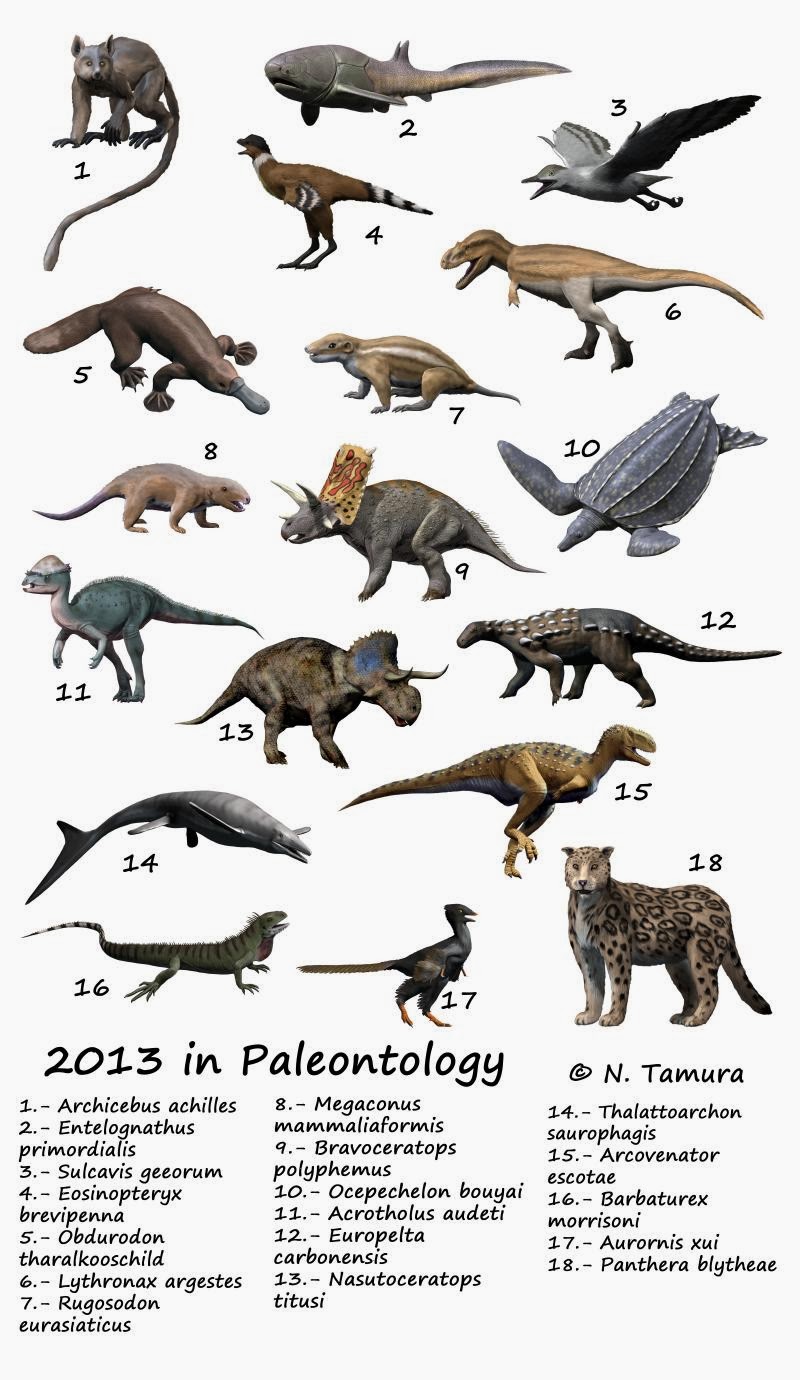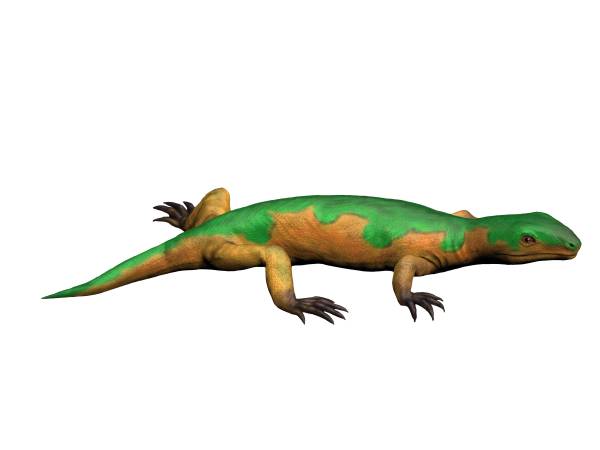|
Proxilodon
''Proxilodon'' is an extinct genus of recumbirostran microsaur from the Early Permian Speiser Formation of Kansas, United States. It contains a single species, ''Proxilodon bonneri'', (formerly "Euryodus" ''bonneri''). History of study There is only one known specimen of ''Proxilodon bonneri'', the former holotype of ''Euryodus bonneri'', named by Schultze & Foreman (1981). It was collected in 1976 by Brian Foreman from a roadcut site in Kansas in the lower Speiser Formation (often called the Speiser Shale) that preserves primarily aquatic vertebrates, such as the lungfish '' Gnathorhiza'', the dvinosaur temnospondyl '' Acroplous vorax'', the nectridean lepospondyl '' Diplocaulus'', and the lysorophian '' Lysorophus tricarinatus''. The species was named after Orville Bonner, who prepared the specimen, a complete skull with the left lower jaw in articulation and associated vertebrae and a fragmentary humerus. Huttenlocker et al. (2013) identified numerous differences from othe ... [...More Info...] [...Related Items...] OR: [Wikipedia] [Google] [Baidu] |
Euryodus
''Euryodus'' is an extinct genus of microsaur within the family Gymnarthridae. ''Euryodus'' is a Lepospondyl from the clade Microsauria that lived during the Early Permian. The name comes from Greek, meaning ‘broad-tooth’. It has been found in the southern half of North America, from its original discovery in Texas up to Utah. Geological Information From the Clear Fork formation, there are many other animals found with ''Euryodus''. Most commonly this was other amphibians such as '' Lysorophus'', but includes fish and other reptiles as well. ''Euryodus primus'' was found to be relatively common in this rock formation. The specimen was found in the red clay, cemented by calcite and silica. This is similar to what is left in modern rain pools by streams in the same area. The abundance of ''Euryodus'' in one of these pools suggests that the animal was either not able to leave the water, or did not leave these pools very often. Rocks from the Clear Fork formation are known t ... [...More Info...] [...Related Items...] OR: [Wikipedia] [Google] [Baidu] |
Huskerpeton
''Huskerpeton'' (“Husker” after the University of Nebraska “corn huskers” and “-erpeton” meaning creeping in Greek) is an extinct genus of recumbirostran from the Early Permian period. They belong to the order Microsauria, which was established in 1863 by Dawson, and was quickly expanded to include many different small taxa. They lived in what is now Nebraska and Kansas. The holotype (and only existing specimen) of ''Huskerpeton'' was uncovered at the Eskridge formation in Nebraska, which is part of how it got its name. Most recumbirostrans stayed very small in size, with skulls rarely larger than 1 cm long. ''Huskerpeton'' is no exception, with a skull length of 17mm and width of 13mm. Recumbirostra was established as a clade in 2007 to include many of the traditional microsaurs, and has since been shown to be a paraphyletic, or polyphyletic grouping. Recumbirostrans are characterized by “their reduced complement of dermal skull bones, a unique atlantooccipita ... [...More Info...] [...Related Items...] OR: [Wikipedia] [Google] [Baidu] |
Stegotretus
''Stegotretus'' is an extinct genus of microsaur referred to the Pantylidae. It is known from the Carboniferous–Permian boundary Cutler Formation exposures of New Mexico. History of study Material now referred to ''Stegotretus'' was first described (in brief) by Eberth & Berman (1983). It was formally named by Berman et al. (1988). The genus name comes from the Greek ''stegos'' ('roof') and ''tretos'' ('perforated') to refer to a large fenestra found on the palatine bone. The species name, ''S. agyrus'', is said to be derived from Greek ''agyrus'' ('gathering' / 'crowd') in reference to the concentration of all known specimens in a small area. The proper word in ancient Greek for 'gathering' / 'crowd' is however ''agora'' (ἀγορά), with the variant ''agyris'' (ἄγυρις) in the Aeolic dialect.Liddell, H.G. & Scott, R. (1940). ''A Greek-English Lexicon. Revised and augmented throughout by Sir Henry Stuart Jones with the assistance of Roderick McKenzie.''Oxford: Claren ... [...More Info...] [...Related Items...] OR: [Wikipedia] [Google] [Baidu] |
2013 In Paleontology
Plants Cnidarians Arthropods Bryozoans Brachiopods Molluscs Echinoderms Conodonts Fishes Amphibians Research * Laloy ''et al.'' (2013) reinterpret the Eocene frog species ''Rana cadurcorum'' from the Quercy Phosphorites (France) as a junior synonym of '' Thaumastosaurus gezei''. Newly named temnospondyls Newly named lepospondyls Newly named lissamphibians Turtles Research * A study on the anatomy of the brain and inner ear of the Jurassic turtle '' Plesiochelys etalloni'' is published by Paulina Carabajal ''et al.'' (2013). Newly named turtles Thalattosaurs Ichthyopterygians Lepidosauromorphs Newly named sauropterygians Newly named rhynchocephalians Newly named lizards Newly named snakes Archosauromorphs Newly named basal archosauromorphs Archosaurs Other reptiles Synapsids Non-mammalian synapsids Research * The postcranial skeleton of therocephalian ''Ictidosuchoides'' is described by Heidi Fourie (2013). New tax ... [...More Info...] [...Related Items...] OR: [Wikipedia] [Google] [Baidu] |
Hapsidopareion
''Hapsidopareion'' is an extinct genus of microsaur belonging to the family (biology), family Hapsidopareiontidae, Hapsidopareiidae. Fossils have been found in the early Permian of Oklahoma. History of study ''Hapsidopareion'' was named in 1973 by American paleontologist Eleanor Daly based on material collected from the early Permian South Grandfield locality in southwestern Oklahoma. The genus name is given for the Greek ''hapsido''- ('arch') and -''pareion'' ('cheek'). The species name, ''H. lepton'', is given for the slightness of the animal. The taxon is known from several partial to complete skulls and possibly by some isolated postcranial material. Anatomy ''Hapsidopareion'' was originally differentiated from other microsaurs by the large temporal emargination, which produced other variable morphology of the circum-emargination bones (e.g., postorbital). It is similar to the more recently described ''Llistrofus, Llistrofus pricei'' in this regard, but can be differentia ... [...More Info...] [...Related Items...] OR: [Wikipedia] [Google] [Baidu] |
Diplocaulus
''Diplocaulus'' (meaning "double stalk") is an extinct genus of lepospondyl amphibians which lived from the Late Carboniferous to the Late Permian of North America and Africa. ''Diplocaulus'' is by far the largest and best-known of the lepospondyls, characterized by a distinctive boomerang-shaped skull. Remains attributed to ''Diplocaulus'' have been found from the Late Permian of Morocco and represent the youngest-known occurrence of a lepospondyl. Description ''Diplocaulus'' had a stocky, salamander-like body, but was relatively large, reaching up to in length. Although a complete tail is unknown for the genus, a nearly complete articulated skeleton described in 1917 preserved a row of tail vertebrae near the head. This was construed as circumstantial evidence for a long, thin tail capable of reaching the head if the animal was curled up. Most studies since this discovery have argued that anguiliform (eel-like) tail movement was the main force of locomotion utilized by ''D ... [...More Info...] [...Related Items...] OR: [Wikipedia] [Google] [Baidu] |
Pantylus
''Pantylus'' (from , 'all' and , 'knob') is an extinct microsaurian tetrapod from the Permian period of North America. ''Pantylus'' was probably a largely terrestrial animal, judging from its well-built legs. It was about long, and resembled a lizard with a large skull and short limbs. It had numerous blunt teeth, and probably chased after invertebrate Invertebrates are animals that neither develop nor retain a vertebral column (commonly known as a ''spine'' or ''backbone''), which evolved from the notochord. It is a paraphyletic grouping including all animals excluding the chordata, chordate s ... prey. References External links Skull cast Microsauria Cisuralian tetrapods of North America Taxa named by Edward Drinker Cope Fossil taxa described in 1881 {{Paleo-tetrapod-stub ... [...More Info...] [...Related Items...] OR: [Wikipedia] [Google] [Baidu] |
Recumbirostra
Recumbirostra is a clade of tetrapods which lived during the Carboniferous and Permian periods. They are thought to have had a fossorial (burrowing) lifestyle and the group includes both short-bodied and long-bodied snake-like forms. At least one species, the long-bodied molgophid '' Nagini mazonense,'' lost its forelimbs entirely. Recumbirostra includes the families Pantylidae, Gymnarthridae, Ostodolepidae, Rhynchonkidae and Brachystelechidae, with additional families such as Microbrachidae and Molgophidae being included by some authors. Brachystelechidae and Molgophidae have also been grouped together in the suggested clade Chthonosauria. Recumbirostra was erected as a clade in 2007 to include many of the taxa traditionally grouped in " Microsauria", which has since been shown to be a paraphyletic or polyphyletic grouping. Like other "microsaurs", the recumbirostrans have traditionally been considered to be members of the subclass Lepospondyli; however, many phylogen ... [...More Info...] [...Related Items...] OR: [Wikipedia] [Google] [Baidu] |
Saxonerpeton
''Saxonerpeton'' is an extinct genus of microsaur in the family Hapsidopareiidae. Fossils have been found from Early Permian strata near Dresden, Germany. References External links''Saxonerpeton''in the Paleobiology Database The Paleobiology Database (PBDB) is an online resource for information on the distribution and classification of fossil animals, plants, and microorganisms. History The Paleobiology Database originated in the NCEAS-funded Phanerozoic Marine Pale ... Microsauria Cisuralian tetrapods of Europe Fossil taxa described in 1978 {{paleo-tetrapod-stub ... [...More Info...] [...Related Items...] OR: [Wikipedia] [Google] [Baidu] |
Tuditanus
''Tuditanus'' is an extinct genus of tuditanid microsaur from the Carboniferous The Carboniferous ( ) is a Geologic time scale, geologic period and System (stratigraphy), system of the Paleozoic era (geology), era that spans 60 million years, from the end of the Devonian Period Ma (million years ago) to the beginning of the ..., ~ 306 Ma ago. It was of small size, reaching a length of about 24 cm. References Microsauria Pennsylvanian tetrapods of North America Taxa named by Edward Drinker Cope {{Paleo-tetrapod-stub ... [...More Info...] [...Related Items...] OR: [Wikipedia] [Google] [Baidu] |
Asaphestera
''Asaphestera'' is an extinct genus of a synapsid described on the basis of fossils from the Carboniferous of the Joggins locality in Nova Scotia, Canada. It was originally described as an undetermined lepospondyl and subsequently classified as a microsaur within the family Tuditanidae. A study published in 2020 found that specimens referred to ''Asaphestera'' represented several unrelated species. Steen (1934)'s original species name ''Asaphestera platyris'' was retained for a skull which has been re-evaluated as the earliest known synapsid. The type species of ''Asaphestera'' is ''Asaphestera platyris'', named by Steen (1934) based on three skulls. Carroll & Gaskill (1978) noted that one of the skulls was briefly named as the species ''" Hylerpeton" intermedium'' by Dawson (1894), though it is no longer consider related to the genus ''Hylerpeton''. According to Dawson's species name, they renamed ''Asaphestera platyris'' to ''Asaphestera intermedia''. Mann ''et al.'' (2020) r ... [...More Info...] [...Related Items...] OR: [Wikipedia] [Google] [Baidu] |
Microbrachis
''Microbrachis'' is an extinct genus of microsaurian tetrapod from the Carboniferous Kladno Formation of the Czech Republic. Description ''Microbrachis'' was an elongated, salamander-like creature, about long, with over 40 vertebrae instead of the average 15–26 in its living relatives. It had minute limbs, and probably swam using fish-like lateral body movements. ''Microbrachis'' probably fed on fresh water plankton such as shrimp. ''Microbrachis'' was pedomorphic, retaining its larval gills in adulthood. Similar traits are found in the extant axolotl The axolotl (; from ) (''Ambystoma mexicanum'') is a neoteny, paedomorphic salamander, one that Sexual maturity, matures without undergoing metamorphosis into the terrestrial adult form; adults remain Aquatic animal, fully aquatic with obvio .... References Further reading * Andrew R. Milner, "The Tetrapod Assemblage from Nýrany, Czechoslovakia", in Systematics Association Special Volume No.15, "The Terrestri ... [...More Info...] [...Related Items...] OR: [Wikipedia] [Google] [Baidu] |




